Address
304 North Cardinal
St. Dorchester Center, MA 02124
Work Hours
Monday to Friday: 7AM - 7PM
Weekend: 10AM - 5PM
Address
304 North Cardinal
St. Dorchester Center, MA 02124
Work Hours
Monday to Friday: 7AM - 7PM
Weekend: 10AM - 5PM
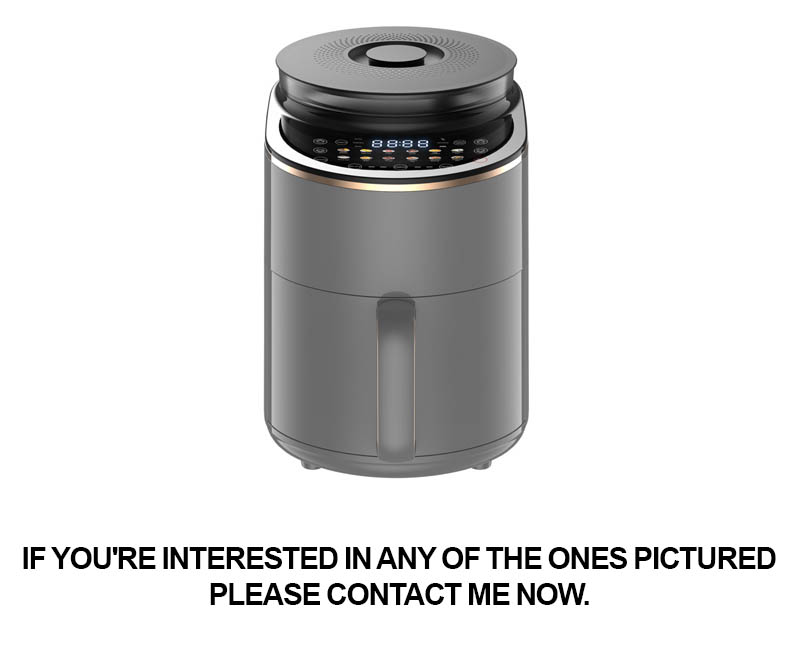
In a world where consumer demands are ever-evolving, the landscape of kitchen appliances is witnessing a significant shift. Private label kitchen appliance packaging is not just a trend; it’s a strategic move that’s reshaping the market. This innovative approach to branding and packaging is capturing the attention of consumers and businesses alike, offering a blend of cost-effectiveness and unique design. As we delve into the nuances of this phenomenon, it becomes clear that the private label packaging wave is not just a fleeting trend, but a transformative force in the industry.
The kitchen appliance market has undergone a significant transformation, with private label brands emerging as a formidable force. Once the domain of established retailers and manufacturers, private label kitchen appliances have gained traction due to their competitive pricing, innovative designs, and increasing consumer trust. This surge in popularity can be attributed to several key factors.
Firstly, the economic downturn has prompted many consumers to seek more budget-friendly options without compromising on quality. Private label brands have capitalized on this demand by offering appliances that are often priced lower than their name-brand counterparts. This affordability has made kitchen appliances more accessible to a wider demographic, including price-conscious shoppers looking to upgrade their home without breaking the bank.
Secondly, the rise of e-commerce has played a pivotal role in the growth of private label kitchen appliances. Online retailers have been able to offer a broader range of private label products with greater convenience, allowing customers to compare prices and features from the comfort of their homes. This ease of access has not only expanded the market reach but has also increased consumer awareness and interest in private label brands.
Moreover, the quality of private label appliances has significantly improved over the years. Many manufacturers now produce private label products with the same engineering and materials used in their premium brands, ensuring that consumers receive reliable and durable appliances. This quality assurance has helped build a loyal customer base that appreciates the value proposition of private label offerings.
Another factor contributing to the rise of private label kitchen appliances is the emphasis on sustainability. Consumers are increasingly concerned about the environmental impact of their purchases, and private label brands often have a stronger commitment to eco-friendly practices. This includes using recycled materials in packaging, designing appliances with energy efficiency in mind, and promoting a circular economy.
The packaging of private label kitchen appliances has also evolved to reflect these changes. Modern packaging is not only functional but also aesthetically pleasing, appealing to consumers who are not just looking for a practical purchase but also a stylish one. Innovative packaging designs not only protect the product during shipping but also enhance the overall shopping experience by showcasing the appliance’s features and benefits.
Retailers have also recognized the importance of branding in private label packaging. By investing in attractive and informative packaging, they can differentiate their private label products from competitors and reinforce their own brand identity. This strategic approach helps to create a sense of exclusivity and trust, making private label appliances more appealing to consumers who might otherwise opt for well-known brand names.
Furthermore, the customization of private label packaging has become a key differentiator. Retailers are increasingly offering private label appliances with packaging that reflects their specific brand ethos and target market. This personalized approach allows retailers to create a unique selling proposition that resonates with their customers, fostering brand loyalty and repeat business.
In the competitive landscape of kitchen appliances, private label brands have found a niche by focusing on niche markets. For example, there is a growing trend of private label appliances designed for small kitchens or eco-conscious consumers. These specialized offerings cater to specific needs and preferences, further expanding the appeal of private label products.
As the kitchen appliance market continues to evolve, the role of technology cannot be overlooked. Smart appliances, for instance, are becoming more common, and private label brands are quick to adopt these innovations. The packaging of these smart appliances must not only communicate the product’s advanced features but also provide clear instructions and support for the user.
In conclusion, the rise of private label in kitchen appliances is a multifaceted phenomenon driven by economic factors, technological advancements, and changing consumer values. With a focus on affordability, sustainability, and innovation, private label brands are carving out a substantial presence in the market, challenging traditional manufacturers and reshaping the industry landscape.

Private label kitchen appliance packaging has become a crucial aspect of the market, reflecting both the evolving consumer landscape and the strategic efforts of retailers. Here’s a closer look at what makes this segment so significant and innovative.
The evolution of private label packaging has been marked by a shift from mere functionality to a canvas for creative expression. These packages now often serve as a silent salesperson, communicating the product’s features, brand values, and the perceived quality without the need for expensive advertising campaigns.
With the rise of e-commerce, packaging has transformed into a multi-faceted tool. It must be not only visually appealing but also durable, protective, and easily recyclable. Retailers are under pressure to design packaging that not only ensures the safe transit of the product but also aligns with their brand’s eco-friendly image.
In today’s market, the role of packaging extends beyond just protecting the contents. It’s a key factor in influencing consumer purchase decisions. The packaging of private label kitchen appliances needs to convey reliability, innovation, and a sense of belonging to the brand ecosystem. This is especially true as consumers seek value-driven alternatives to high-priced, name-brand products.
Color and design play a pivotal role in the effectiveness of private label kitchen appliance packaging. Subtle changes in color schemes can evoke emotions and convey the product’s intended use. For instance, blues might suggest a high-tech, sophisticated feel, while greens might convey eco-friendliness. The design must also cater to the demographic the retailer is targeting, be it the sleek and modern appeal for tech-savvy Gen Z or the classic, timeless feel for older generations.
Functionality is another cornerstone of successful private label packaging. It must be easy to open, with clear instructions that minimize confusion. The packaging should also be space-efficient, making it easy for consumers to store and use the appliance. Innovative features like transparent sections to showcase the appliance’s interior or smart labels that provide information on usage and maintenance are becoming increasingly common.
The rise of sustainability has also reshaped the landscape of private label packaging. Consumers are more environmentally conscious than ever before, and retailers are responding by using eco-friendly materials. Packaging made from recycled materials, biodegradable options, and designs that minimize waste are no longer just nice-to-have features; they’re essential to maintain consumer trust and loyalty.
Another key trend is the integration of technology. Smart packaging solutions that provide additional information or engage the consumer through interactive elements are gaining traction. QR codes on packages can direct customers to tutorials, recipes, or maintenance tips, enhancing the user experience beyond the product’s physical attributes.
In addition to visual and functional considerations, the legal and regulatory environment plays a significant role in private label packaging. Retailers must comply with various laws related to labeling, safety, and environmental regulations, which can sometimes limit creative freedom. Navigating this legal maze while ensuring packaging stands out on the shelves is a delicate balance.
The use of premium materials and finishes has also become a hallmark of high-quality private label kitchen appliances. Packaging that reflects the premium nature of the product can boost perceived value and differentiate it from cheaper alternatives. This includes high-quality paper, advanced printing techniques, and luxurious textures that appeal to consumers who value their kitchen appliances not just for functionality but for aesthetics as well.
Finally, the rise of private label in kitchen appliances has highlighted the importance of consistency. Retailers are recognizing that packaging is a key component of brand recognition. A cohesive and professional look across all their products helps to build a brand image that is associated with quality and trust.
In summary, private label kitchen appliance packaging has become a strategic battleground for retailers. It must encapsulate a balance between innovation, functionality, sustainability, and brand representation. As consumer expectations continue to evolve, so too will the role of packaging in shaping the future of the kitchen appliance market.
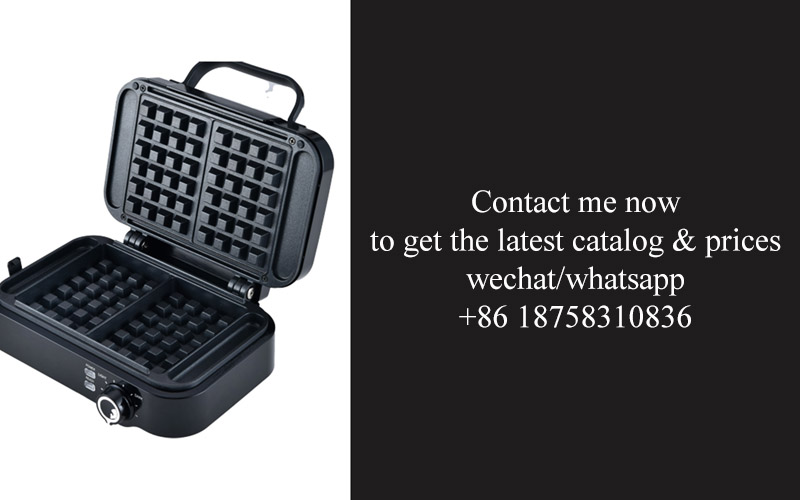
In the ever-evolving landscape of kitchen appliances, innovation is not just about creating new products, but also about enhancing the design and functionality of existing ones. Here’s a closer look at some of the latest trends in these areas:
The integration of smart technology has become a cornerstone in kitchen appliance design. From refrigerators that can monitor food spoilage to ovens that can be controlled remotely via a smartphone app, the fusion of convenience and connectivity is reshaping how we interact with our kitchen tools. These smart features not only make appliances more user-friendly but also more efficient, as they can optimize settings based on usage patterns and environmental conditions.
Sleek and minimalist aesthetics are increasingly popular, reflecting a shift towards a more modern and sophisticated kitchen environment. Appliance manufacturers are focusing on creating products that blend seamlessly into the kitchen decor, with sleek lines and hidden controls. For instance, induction cooktops are now available with flat surfaces that eliminate the need for visible burners, offering a clean and contemporary look.
Energy efficiency has become a major focus, with appliances now boasting advanced technologies that reduce energy consumption without compromising performance. This includes innovations like LED lighting in refrigerators, which not only saves energy but also extends the life of the appliance. Additionally, appliances are being designed with better insulation to maintain temperatures more effectively, leading to lower utility bills for consumers.
Ease of use is another critical aspect of innovation. Touchscreen interfaces and voice control are becoming standard features, making appliances more accessible to a wider range of users, including those with physical limitations. For example, ovens with voice-activated controls allow hands-free operation, which is particularly useful for cooking when wearing gloves or when multitasking.
In terms of functionality, there’s a growing trend towards multifunctionality. Appliances are being designed to perform multiple tasks, such as microwave ovens that can also grill or defrost, or countertop appliances that can serve as both a blender and a food processor. This not only saves space but also simplifies meal preparation, as users can complete multiple steps with a single device.
The design of kitchen appliances is also becoming more personalized. Customizable options, such as interchangeable door panels or color choices, allow consumers to tailor their appliances to their specific tastes and kitchen styles. This level of personalization extends to the inclusion of unique features, like built-in wine coolers or espresso machines, which cater to the specific needs and preferences of individual households.
Safety features are also being prioritized in appliance design. From child locks on ovens to automatic shut-off mechanisms in microwaves, manufacturers are incorporating safety features to prevent accidents and protect users. These innovations not only make appliances safer but also give consumers peace of mind.
Lastly, there’s a growing emphasis on sustainability. Appliances are being designed with eco-friendly materials and manufacturing processes, and some even have features that help reduce waste, such as water-saving dishwashers or energy-efficient refrigerators. These sustainable practices are not only good for the environment but also resonate with consumers who are increasingly conscious of their ecological footprint.
In summary, the innovation in design and functionality of kitchen appliances is driven by a desire to create products that are smarter, more efficient, and better integrated into the lives of consumers. As technology continues to advance, we can expect to see even more innovative features that make cooking and kitchen tasks more enjoyable and efficient.

In the ever-evolving landscape of the kitchen appliance market, understanding current trends and consumer preferences is crucial for brands and retailers looking to stay ahead. Here’s a closer look at the dynamics shaping this dynamic industry.
Consumer demand for smart appliances has surged, with a significant shift towards automation and connectivity. Users are increasingly drawn to devices that can integrate with smartphones and home automation systems, allowing for greater control and convenience. Smart refrigerators, ovens with built-in cameras, and dishwashers that can be controlled remotely are just a few examples of this trend.
Energy efficiency remains a top priority for many consumers, as sustainability becomes a more pressing issue. There’s a growing preference for appliances that not only save energy but also provide clear information on their energy consumption. The labeling of appliances with energy ratings and certifications like the Energy Star has become a significant factor in purchase decisions.
Eco-friendly materials are becoming more popular in kitchen appliance packaging and construction. Recyclable and biodegradable materials are not only appealing to environmentally conscious consumers but also to those who are cost-conscious, as they may reduce waste and disposal costs over time.
Design aesthetics have also taken a front seat in the appliance market. Consumers are no longer just looking for functional items; they’re seeking kitchen appliances that complement their home decor and personal style. Sleek, minimalist designs with touch controls and concealed handles are becoming increasingly sought after, reflecting a move away from the traditional, boxy shapes of appliances.
The kitchen has evolved from a utilitarian space to a multifunctional room, and appliances are following suit. Countertop mixers that can also serve as juicers or pasta makers, and ovens that can bake, broil, and even dehydrate food, are examples of how appliances are adapting to meet diverse culinary needs. The rise of sous-vide cooking and specialized appliances designed for this method has also highlighted the importance of innovation in both design and functionality.
The demand for versatility is on the rise, with consumers seeking appliances that can perform multiple tasks. For instance, a single appliance that can be used for both grilling and air frying is attractive to those who want to streamline their kitchen and reduce clutter. The convenience of having all the necessary features in one unit is a strong selling point.
Health and wellness are influencing appliance purchases, with a growing interest in appliances that can contribute to a healthier lifestyle. For example, steam ovens and air fryers are becoming more popular due to their ability to cook food with less oil and fat, aligning with the trend towards healthier eating habits.
There’s a noticeable trend towards customization and personalization. Consumers are looking for appliances that can be tailored to their specific needs, whether it’s through adjustable settings, modular components, or even custom finishes. This shift reflects a desire for a more individualized kitchen experience.
Lastly, the pandemic has had a lasting impact on consumer preferences. The increased importance of home entertainment and cooking has led to a surge in demand for appliances that can enhance these experiences, such as high-end coffee makers, wine chillers, and outdoor cooking appliances.
The kitchen appliance market is a testament to the changing landscape of consumer tastes and technological advancements. As these trends continue to shape the industry, manufacturers and retailers must stay adaptable and responsive to meet the evolving demands of their customers.
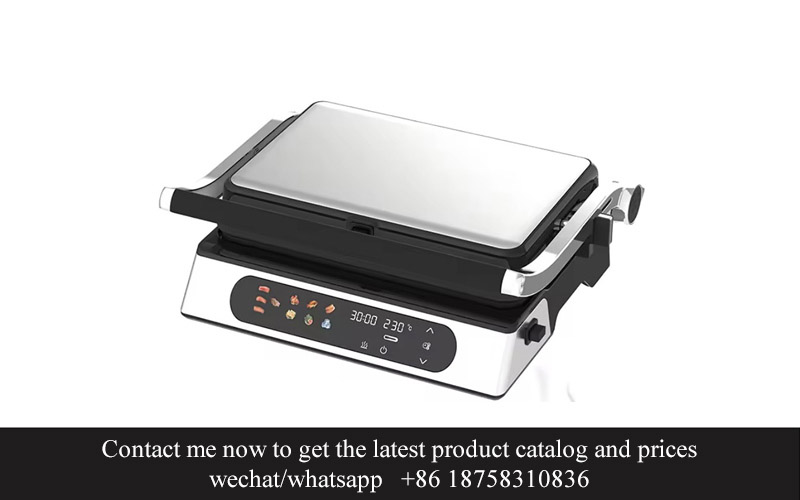
The shift towards sustainable practices has seeped into every aspect of our lives, and the kitchen appliance industry is no exception. Packaging, a critical element in the lifecycle of these products, is under the microscope more than ever. Here’s how sustainability is reshaping the packaging landscape for kitchen appliances.
Materials are the cornerstone of sustainable packaging. There’s a growing preference for eco-friendly options like biodegradable plastics, recycled paper, and compostable materials. These choices not only reduce the environmental footprint but also cater to consumers who are increasingly conscious of their carbon footprint. Brands are investing in research to find alternatives that maintain the integrity of the product while aligning with eco-conscious values.
Design plays a pivotal role in sustainability. Manufacturers are now focusing on minimalist designs that use less material, thus reducing waste. The concept of ‘less is more’ has taken hold, where packaging is stripped down to its essential elements, ensuring that every piece serves a purpose. This not only enhances the aesthetic appeal but also contributes to the product’s lifecycle, as less material means less waste at the end of its use.
Recycling is becoming a cornerstone of packaging strategy. Companies are implementing packaging that is fully recyclable, making it easier for consumers to dispose of it responsibly. This is not just about compliance with local recycling programs; it’s about creating a seamless transition from product use to recycling, which in turn encourages more consumers to participate in recycling efforts.
Smart packaging technologies are emerging as a response to sustainability challenges. These innovations include RFID tags that help track the product’s journey from manufacturing to disposal, ensuring that it can be recycled efficiently. Additionally, intelligent packaging can provide real-time information on the appliance’s performance, thereby reducing the need for excess packaging material.
Brand transparency is another dimension of sustainability in packaging. Consumers are not just looking for sustainable materials; they want to know exactly what’s in their products and packaging. Brands are responding by providing detailed information on their packaging, detailing the materials used and the sustainability initiatives in place. This transparency builds trust and fosters a stronger relationship with the consumer.
The life cycle assessment (LCA) is a tool that’s gaining traction in the industry. It allows brands to evaluate the environmental impact of their packaging throughout its entire lifecycle, from raw material extraction to disposal. By understanding the true impact, companies can make informed decisions about where to improve and reduce their ecological footprint.
In the realm of kitchen appliances, energy-efficient models are becoming standard, and this extends to their packaging. The use of solar-powered or wind-powered packaging processes is on the rise, reflecting a commitment to reducing energy consumption during production.
Lastly, the concept of circular economy is influencing packaging design. Instead of linear models that produce, use, and dispose, circular economy models aim to keep materials in use for as long as possible. This could mean packaging that can be transformed into another product or material, thereby extending the life of resources.
Sustainability in packaging for kitchen appliances is not just a trend; it’s a cultural shift. It’s about creating packaging that is not just functional but also reflects the values of the consumer. As the industry continues to evolve, we can expect to see more innovative solutions that balance functionality, sustainability, and consumer satisfaction.
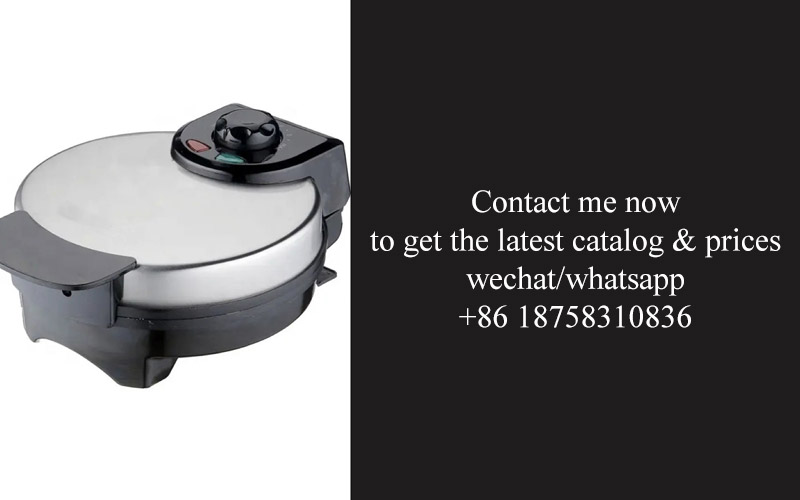
In the competitive landscape of kitchen appliance markets, the balance between cost-effectiveness and brand differentiation is a delicate yet crucial dance. Consumers are increasingly seeking value for their money, while brands strive to stand out in a crowded marketplace. Let’s delve into how these two factors intertwine in the realm of kitchen appliance packaging.
The demand for affordability is on the rise, and it’s not just limited to budget-conscious shoppers. As the global economic climate shifts, more consumers are looking for products that offer quality without the premium price tag. In response, private label and generic brands have stepped up their game, focusing on packaging that not only reduces costs but also maintains an appealing look that doesn’t compromise on brand image.
Cost-effectiveness in packaging design often involves streamlining production processes. This can mean using less material, opting for simpler shapes that are easier to manufacture, or even rethinking the very materials used. For instance, lightweight plastics or recycled paper alternatives have become popular choices, not just for their environmental benefits but also for their cost-saving potential.
However, just because a packaging solution is cost-effective doesn’t mean it lacks style or sophistication. Brands are investing in innovative designs that are both budget-friendly and visually appealing. Think of sleek, minimalist designs that use less material but still make a statement on the shelf. The key is to find that sweet spot where simplicity meets elegance, ensuring that the product doesn’t get lost in the sea of competition.
On the other side of the coin, brand differentiation is about creating a unique identity that resonates with consumers. Packaging plays a pivotal role in this process. Brands are using their packaging to tell a story, convey their values, and establish a connection with the consumer. For example, eco-friendly brands might use recycled materials and earthy tones to communicate their commitment to sustainability, while high-end brands may opt for luxurious textures and bold colors to reflect their premium status.
One effective strategy for differentiation is the use of unique packaging features. This could be anything from a distinctive shape that stands out on the shelf to interactive elements that engage the consumer. Imagine a kitchen appliance with packaging that doubles as a cooking tool or a decorative piece for the home. Such innovative packaging not only adds value but also creates a memorable brand experience.
Moreover, the packaging design can be a reflection of the product’s functionality. A brand that emphasizes smart technology, for instance, might use sleek, digital interfaces on their packaging to hint at the advanced features inside. This kind of alignment between packaging and product characteristics helps to reinforce the brand’s message and create a cohesive brand image.
In the age of digital marketing and social media, packaging has also become a tool for brand storytelling. A well-designed package can serve as a digital asset, with images and descriptions that can be shared online, extending the brand’s reach and engagement. This is particularly true for niche brands that rely on word-of-mouth and online reviews to build their customer base.
Yet, there’s a fine line between differentiation and overcompensation. Brands must be careful not to get caught up in the latest packaging trends if it doesn’t align with the product or the brand ethos. The goal is to differentiate without diluting the core message or adding unnecessary costs. This often requires a careful balance between creativity and practicality.
In conclusion, the interplay between cost-effectiveness and brand differentiation in kitchen appliance packaging is a complex interdependence. It’s about finding the right mix of affordability and aesthetics, functionality and brand storytelling. By doing so, brands can not only attract cost-conscious consumers but also create a lasting impression that sets them apart in a competitive market.
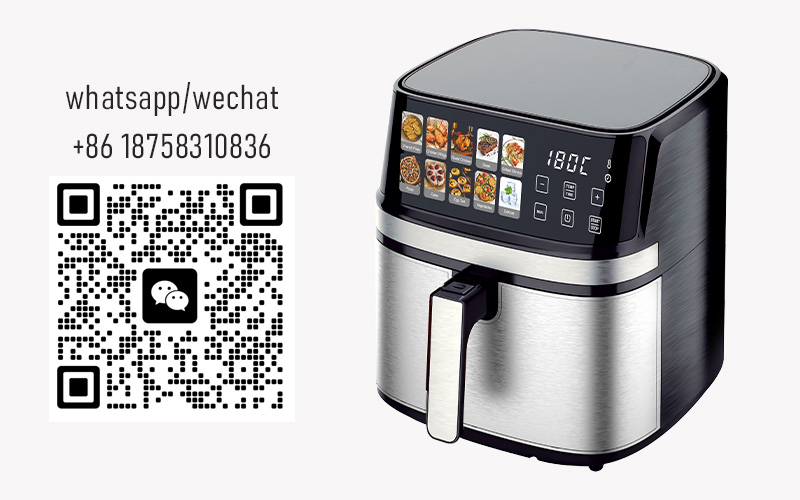
In the realm of private label kitchen appliances, there are several remarkable examples of packaging that have not only stood out in the market but also set new standards for cost-effectiveness and brand differentiation. Let’s delve into a few case studies that showcase the art of successful private label packaging.
The minimalist aesthetic of the ‘EcoGuru’ brand has captivated consumers, who are increasingly drawn to sleek and eco-friendly designs. Their packaging solution, crafted from recycled materials and featuring clear, informative graphics, speaks to the brand’s commitment to sustainability without compromising on style.
The ‘SmartSaver’ kitchen appliance line has found a unique way to differentiate itself through its packaging. By incorporating interactive elements such as QR codes that offer customers instant access to tutorials and recipes, the brand creates an engaging experience that enhances the customer’s connection with the product.
The ‘GreenTouch’ brand has harnessed the power of storytelling in their packaging design. Each product’s box tells a story of its journey from raw materials to the consumer’s kitchen, highlighting the brand’s ethical sourcing and manufacturing processes. This narrative approach has resonated with consumers who value transparency and ethical consumption.
‘EnergyEfficient’ appliances have made a splash with their packaging that doubles as a storage solution. Their eco-friendly, foldable packaging is designed to fit snugly around the appliance, allowing for easy transport and storage. This clever design not only reduces waste but also adds a practical element that sets the brand apart.
The ‘HealthHaven’ line of kitchen appliances boasts packaging that is not only visually appealing but also informative. By using bold graphics and clear language to emphasize the health benefits of their products, the brand educates consumers about the value of their appliances, leading to increased brand loyalty.
The ‘UrbanChef’ brand has cleverly used the packaging of their countertop appliances to reflect the urban lifestyle that their target market embraces. The sleek, modern design of the packaging is in line with the brand’s image and communicates a sense of modernity and innovation to the consumer.
‘EcoLiving’ has taken a different approach by focusing on the life cycle of the appliance within the packaging. Their packaging is designed to be fully recyclable and comes with a guide on how to recycle it, encouraging customers to be part of the solution rather than the problem when it comes to waste.
The ‘CulinaryCraft’ brand has used their packaging to highlight the craftsmanship behind their appliances. By incorporating artisanal elements like handcrafted illustrations and a premium feel, the packaging communicates the high-quality and handcrafted nature of the products, appealing to consumers who seek premium goods at competitive prices.
‘SimpleSolve’ has made a mark with their minimalist approach to packaging. Their design philosophy is centered around simplicity and functionality, which is mirrored in the packaging that is easy to open, transport, and recycle. This straightforward approach has won over customers who appreciate a clutter-free shopping experience.
The ‘SustainableChef’ brand has combined innovation and sustainability in their packaging by using a combination of recycled materials and innovative biodegradable plastics. This commitment to eco-friendly packaging has earned the brand a reputation for being a leader in sustainable kitchen appliance solutions.
These case studies illustrate how private label kitchen appliance brands are not just competing on price but are also differentiating themselves through innovative packaging design, cost-effective strategies, and a strong emphasis on sustainability and consumer experience. By doing so, they are not only capturing the attention of today’s discerning shoppers but also setting the stage for future success in the highly competitive kitchen appliance market.
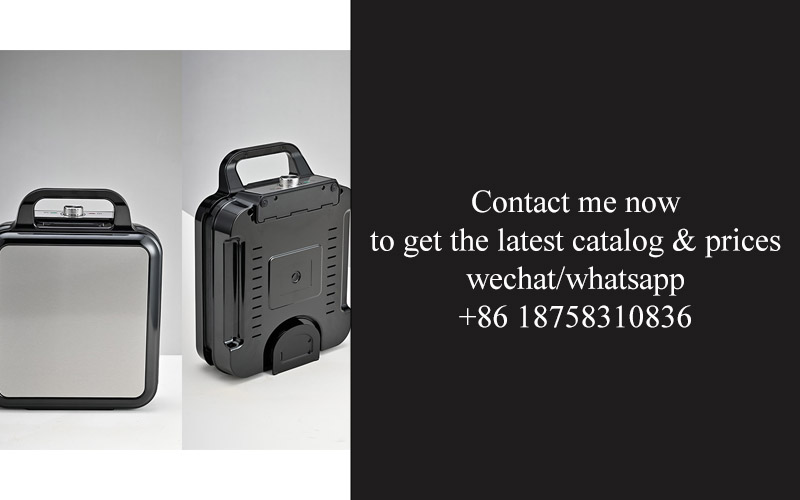
In the evolving landscape of kitchen appliance packaging, several innovative strategies have emerged to cater to both cost-conscious consumers and the desire for unique branding. Let’s delve into some key aspects that highlight the importance of cost-effectiveness and brand differentiation in private label packaging.
The Efficiency of Economical MaterialsPrivate label brands often opt for more affordable packaging materials to keep costs down. However, this doesn’t mean compromising on quality. Innovations in materials like biodegradable plastics, recycled paper, and sustainable inks have made it possible to create durable and visually appealing packaging without breaking the bank. These materials not only reduce the environmental footprint but also resonate with eco-conscious consumers.
Customization for Brand IdentityWhile private label products aim to offer competitive pricing, they must also stand out on the shelves. Brand differentiation through packaging is a crucial strategy. Custom designs, unique color schemes, and distinctive logos help private label brands carve out a niche. Companies are investing in high-quality printing techniques and innovative shapes to make their packaging not just functional but also a part of the brand’s identity.
Interactive and Smart PackagingThe rise of technology has opened new avenues for packaging innovation. Smart packaging that incorporates QR codes, augmented reality, or even RFID technology can provide consumers with additional information, enhance the shopping experience, and create a stronger connection with the brand. This approach not only differentiates the product but also adds value to the consumer’s purchase.
Packaging as a Marketing ToolPrivate label brands are increasingly using packaging as a marketing tool to communicate their unique selling points. Bold, clear messaging about product features, benefits, and quality assurance can influence consumer purchasing decisions. Innovative packaging designs that mimic high-end brands or offer a premium look and feel can also elevate the perceived value of the product.
Sustainability as a DifferentiatorConsumers are more environmentally aware than ever before. Private label brands that prioritize sustainable packaging materials and practices can use this as a significant differentiator. From water-resistant, compostable packaging to eco-friendly labeling, sustainable choices can set a private label product apart from competitors and attract a growing market segment that values sustainability.
Collaboration with Design AgenciesTo achieve cost-effective and brand-differentiating packaging, many private label brands are turning to design agencies. These collaborations bring fresh perspectives, creative solutions, and a deep understanding of market trends. By working with experts, private label brands can create packaging that not only meets their cost constraints but also aligns with consumer preferences and market demands.
Global Trends in Packaging DesignPrivate label brands are not limited to local markets; they often cater to a global audience. This means staying abreast of global packaging design trends is essential. For instance, minimalist packaging is popular in many European markets, while vibrant and culturally specific designs might resonate more in other regions. Adapting to these trends while maintaining brand consistency can be a delicate balance but is crucial for success.
The Importance of Brand StorytellingPackaging is more than just a container; it’s a canvas for storytelling. Private label brands that effectively communicate their brand story through packaging can create an emotional connection with consumers. Whether it’s through the use of natural imagery, historical references, or social responsibility messages, packaging can play a pivotal role in brand differentiation.
In conclusion, the future of private label kitchen appliance packaging lies in a blend of cost-effectiveness, innovative design, sustainability, and strategic branding. By focusing on these elements, private label brands can offer competitive products that not only meet functional needs but also resonate emotionally with consumers, setting them apart in a crowded marketplace.
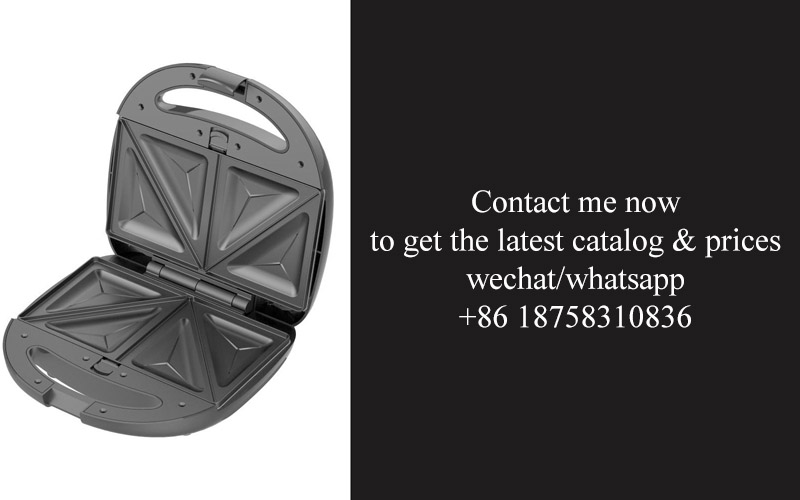
In embracing the private label packaging wave, retailers and manufacturers are recognizing the transformative power of strategic packaging. This shift is not just about aesthetics; it’s about crafting a narrative that resonates with consumers, builds trust, and fosters brand loyalty. As we delve into the nuances of this trend, it’s clear that the future of private label packaging is one of innovation, sustainability, and a deep understanding of consumer needs.
The evolution of packaging design has become a key differentiator in the market. Once seen as a mere container, packaging now serves as a canvas for storytelling. Smart retailers are leveraging this to create a unique brand identity that stands out on crowded shelves. Through innovative designs, they’re not just protecting the product; they’re engaging the consumer’s senses and emotions.
Sustainability is no longer a buzzword but a core value that influences packaging decisions. Brands are increasingly opting for eco-friendly materials, such as biodegradable plastics and recycled cardboard, to reduce their carbon footprint. This shift not only appeals to environmentally conscious consumers but also positions the brand as a leader in ethical practices.
Consumer preferences are shifting rapidly, and private label packaging must adapt to keep pace. There’s a growing demand for transparency, with consumers wanting to know exactly what they’re buying and how it’s packaged. Clear labeling, ingredient lists, and information on the sourcing of materials are becoming standard features, enhancing trust and fostering a stronger connection between the brand and its customers.
The rise of e-commerce has also played a significant role in shaping the future of private label packaging. Online shopping requires packaging that not only protects the product during transit but also communicates the brand’s values and stands out in a digital marketplace. This has led to the development of sleeker, more durable packaging solutions that are both functional and visually appealing.
Innovation in packaging technology is advancing at a remarkable pace. Smart packaging, which incorporates sensors and digital connectivity, is becoming more prevalent. This technology not only provides real-time information about the product’s condition but also offers consumers a unique interactive experience. Imagine a smart oven that updates you on cooking times or a refrigerator that reminds you to restock essentials—these are just a few examples of how packaging can enhance functionality and customer satisfaction.
Another key aspect of the future of private label packaging is the emphasis on customization. Consumers today expect products that cater to their specific needs and preferences. Packaging can play a role in this by offering a range of sizes, configurations, and even personalized messaging. This level of customization can create a more intimate relationship between the brand and the consumer, leading to increased loyalty and repeat purchases.
The role of packaging in brand differentiation cannot be overstated. In a market flooded with options, the right packaging can make a product memorable. Retailers are using packaging to convey the essence of their brand, whether it’s through a minimalist design that reflects modern elegance or a bold, colorful scheme that speaks to a younger audience.
The future of private label packaging is also about collaboration. Brands are working closely with packaging suppliers to develop innovative solutions that are both cost-effective and sustainable. This partnership is crucial in creating packaging that not only meets the demands of today’s consumers but also sets the stage for what’s to come.
In conclusion, the private label packaging wave is a testament to the dynamic nature of consumer preferences and the evolving role of packaging in the retail landscape. By focusing on innovation, sustainability, and a deep understanding of what consumers want, private label brands can rise above the competition and establish themselves as leaders in their respective markets. As the packaging landscape continues to evolve, so too will the brands that embrace this wave, ensuring they stay relevant and resonate with the ever-changing demands of their customers.